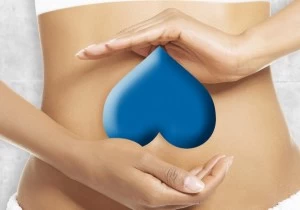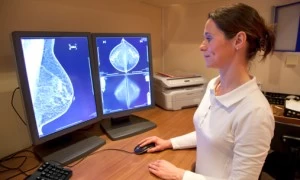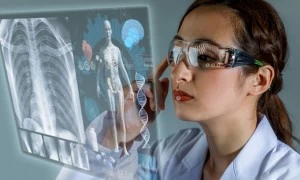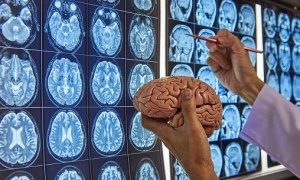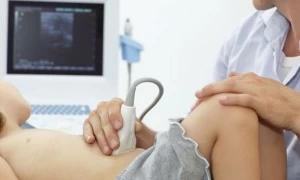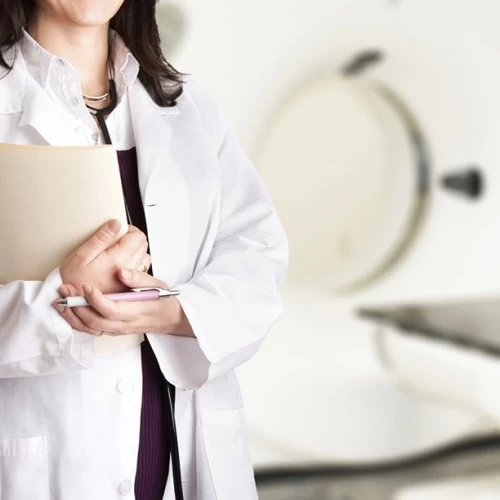Breast Pain
My breasts hurt. Should I be worried?
If you have breast pain, you are not alone. Breast pain, also known as mastalgia, is common and accounts for 45-70% of breast-related health care visits. The good news is that most causes of breast pain are benign (non-cancerous) and usually related to hormonal changes in your body or something as simple as a poor fitting bra. Breast pain varies a lot from person to person and may feel like a dull ache, tenderness, burning sensation, sharp pain or just a sense of uncomfortable fullness. To understand what causes breast pain and what to do about it, it is important to understand a little bit about the different types of breast pain...
Information and Answers Regarding Breast Pain
An excerpt from Solving the Mystery of Breast Pain by Judy C. Kneece, RN, OCN
Breast pain is frightening because most women associate pain with cancer. However, in reality, breast pain may be uncomfortable and annoying, but it is usually not unbearable. What seems unbearable is the fear that it may be cancer. However, less than 10 percent of women diagnosed with breast cancer in one large clinical study had breast pain as a symptom of their cancer. Most breast pain is not associated with cancer but from the female hormones the body makes monthly.
But, because breast cancer could be a cause, a physician should be notified of recurring breast pain. A physician's examination and a mammogram can help determine the cause of the pain. All recurring breast pain needs evaluation to determine its cause.
To assist your physician, it will be helpful if you understand the different kinds and characteristics of breast pain. Pain in the breast is referred to by physicians as mastalgia or mastodynia. This pain may be characterized as cyclic, noncyclic or musculoskeletal.
Cyclic Pain appears to be related to the female hormones estrogen, progesterone and prolactin. Their effects on breast tissue vary at different times of the month and life cycle. Pain related to these changes usually begins at ovulation and increases until the menstrual period begins. After menstruation, the pain decreases. Both breasts are usually involved, but occasionally, one breast will experience a greater degree of pain. Often, the pain is greatest in the upper-outer quadrants (from the nipple back toward the armpit) and sometimes radiates to the arm pit and arm. The discomfort is felt throughout the area and is often described as a dull, aching pain, as if the breast were filled with milk. Pre-menopausal women experience this pain. Menopause relieves the symptoms. This bilateral (both breasts) pain has no relationship to cancer.
Noncyclic Pain differs from cyclic pain in that it has no relationship to the menstrual cycle and the female hormones. This pain can be continuous or may only occur from time to time. The pain is usually localized to a specific area in one breast (unilateral). Described as a sharp, stabbing or burning sensation in the breast, the pain is most often found after age 30. This pain has been linked to fluid-filled cysts, fibroadenomas, duct ectasia, mastitis, injury and breast abscesses. Treatment may include withdrawing the cyst fluid, surgically removing the fibroadenoma, prescribing antibiotics, or having surgery for duct ectasia, mastitis or abscesses.
Some noncyclic pain is also related to musculoskeletal causes. The most common is pain that comes from a pinched nerve in the back, cervical or dorsal radiculitis. Often, a history of back injury, scoliosis, arthritis or osteoporosis is involved. One breast will be painful.
Tietze's Syndrome: Another cause of breast pain originates in the area of the breast bone and ribs and is known as Tietze's syndrome. It is commonly called painful costochondritis (inflammation of the cartilage of the ribs). This pain is localized to the medial half (closest to breastbone) and is tender when pressure is placed on the breastbone, when the rib cage is moved, or when a deep breath is taken. This pain often occurs after doing heavy lifting or activities that stretch the upper body. If the pain is from costochondritis, ibuprofen or aspirin, taken for several days on a regular basis, will usually reduce the pain.
Phlebitis: Other causes for breast pain may be from phlebitis (an inflamed vein), called Mondor's syndrome. Even infected teeth have been shown to cause referred breast pain. Additionally, some herbal products such as Ginseng and Dong Quai will cause breast tenderness and pain as can many prescription medications.
Pain associated with cancer is usually noncyclic, located in one breast and is often accompanied by a lump, skin retraction (dimpling), a bulge on the breast, skin changes (having an orange peel look) or a suspicious mammogram. All noncyclic pain that recurs should be examined by a physician.
Determining the Type of Pain
If you cannot determine if your pain is cyclic or noncyclic, keep a record of the pain you experience daily and its time in your cycle. After one - two months, you will be able to tell if the pain is associated with the fluctuating hormones of your menstrual cycle (cyclic), or if it bears no relationship to hormonal changes (noncyclic).
Breast Pain Evaluation
If you have recurring breast pain, schedule a breast exam with a physician. After a complete history and breast exam, a mammogram will probably be ordered (if over 35) to search out any cause not apparent on the exam. If the exam and the mammogram are negative (no suspicious findings), a search to determine what type of pain and how to relieve your pain should be started. If a lump or cyst is found, a biopsy may be needed to remove the suspicious area or to rule out cancer. It is important to inform your physician of any new prescription or over-the-counter medications you are taking, including herbal supplements.
Ninety percent of breast pain in diagnosed women with breast cancer is not related to cancer. Pain with breast cancer is rare, but all pain needs a thorough evaluation by a physician to be assured that cancer is not present.



































